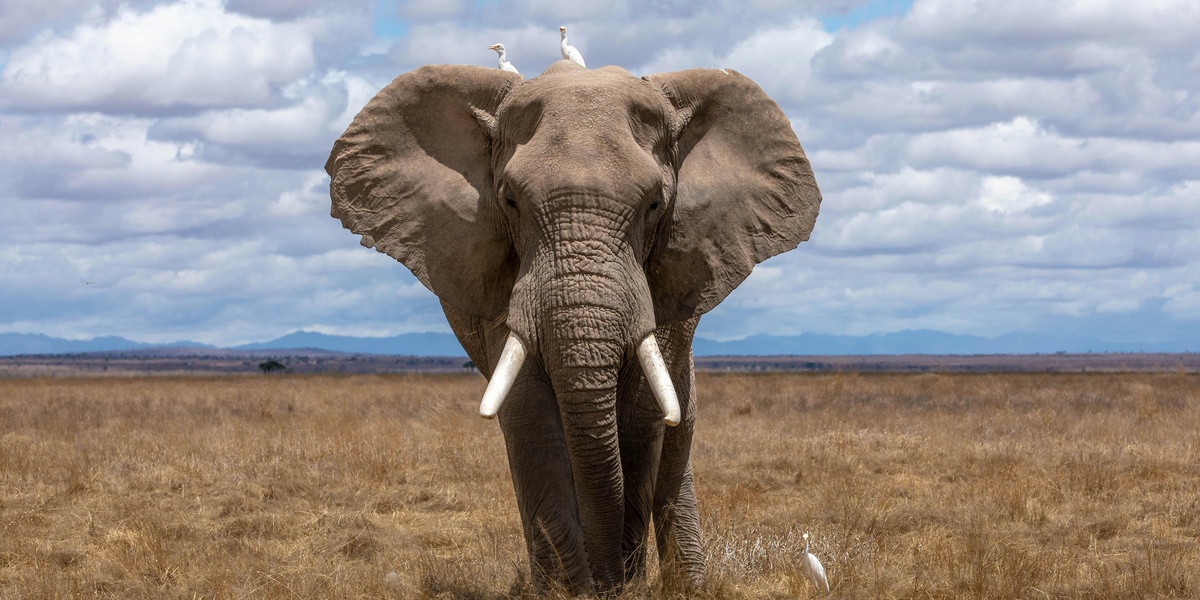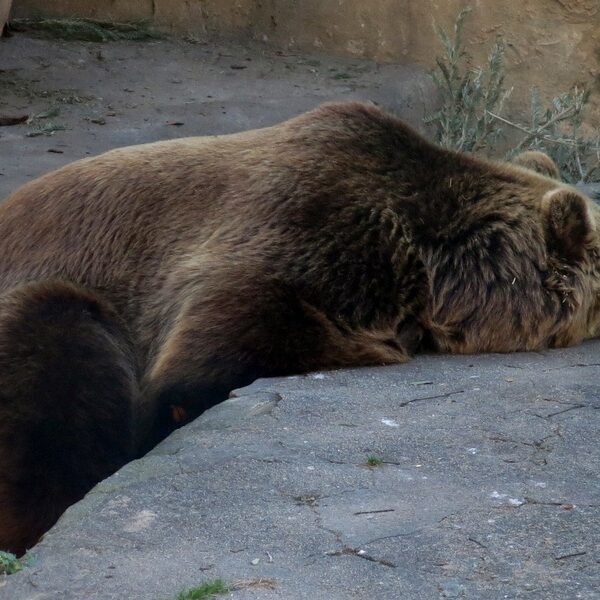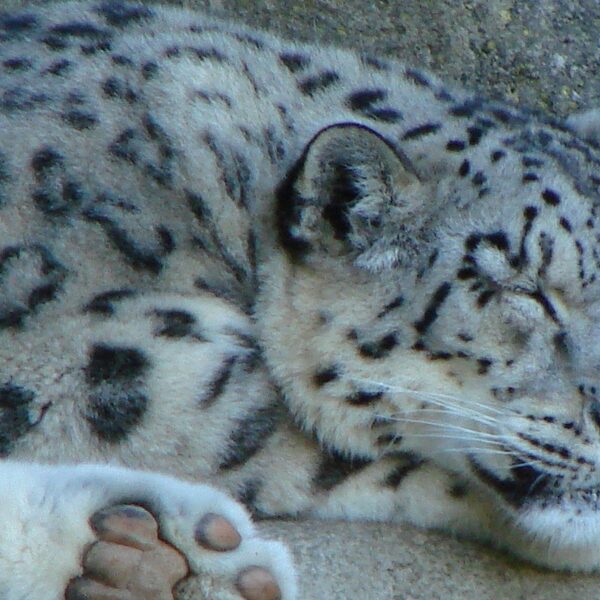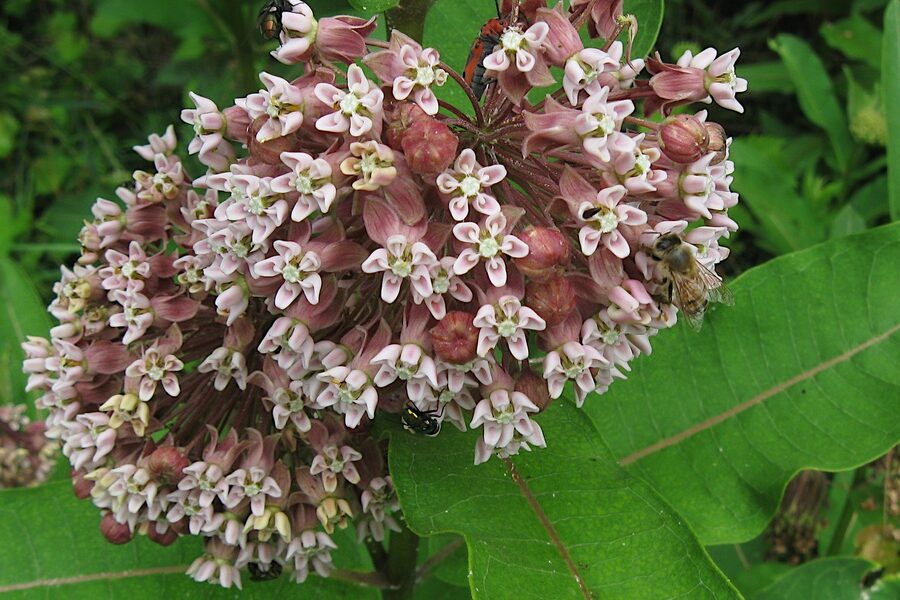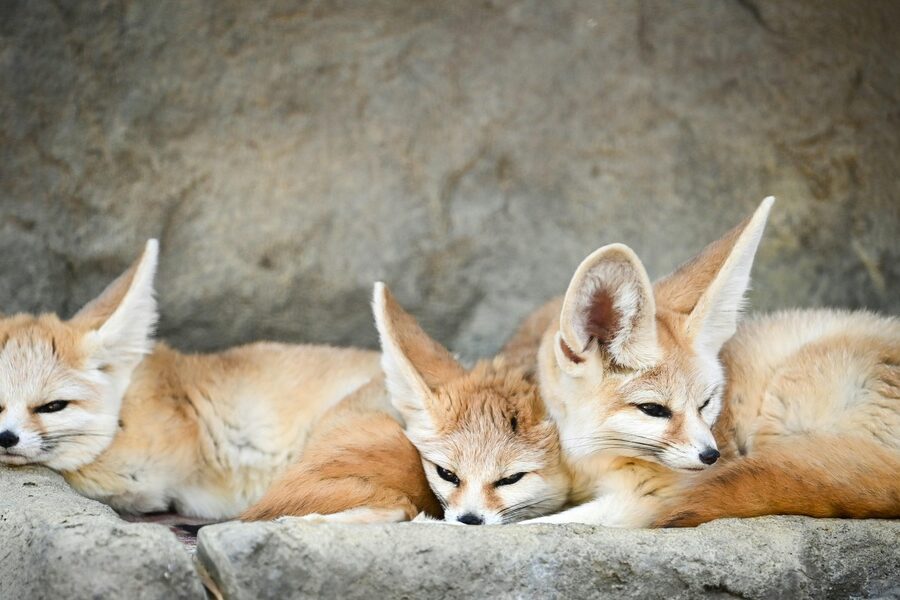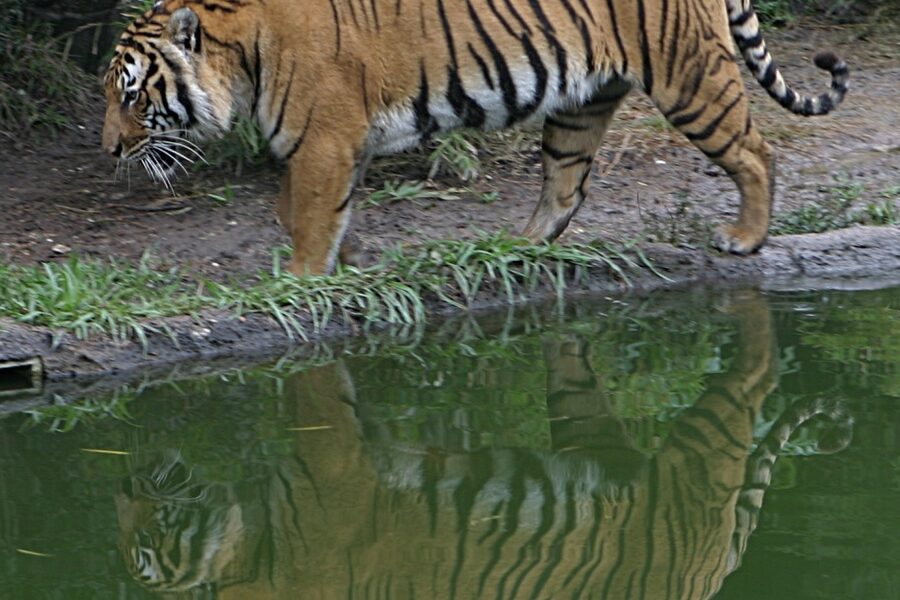Chad sits at the crossroads of the Sahara, the Sahel and Central African ecosystems, so its wildlife reflects deserts, savannas and freshwater landscapes. That geographic variety produces a wide range of species adapted to different climates and habitats.
There are 45 Chad’s native animals, ranging from Addax to West African lungfish. For each entry I list the Scientific name,Size (cm),Main habitat/region so you can compare identity, size and range — you’ll find below.
How current is this list and can I rely on it for field identification?
The list is a compiled reference based on standard sources and sightings; scientific names are included to reduce confusion, but local sizes and ranges can vary. For field ID, use the names here as a starting point and confirm with recent surveys, regional guides or experts.
How should I use the Scientific name, Size (cm), Main habitat/region columns?
Use the Scientific name to match species across references, Size (cm) to set expectations for appearance, and Main habitat/region to narrow where each species occurs—together they make quick comparisons and point toward deeper research.
Chad’s Native Animals
| Name | Scientific name | Size (cm) | Main habitat/region |
|---|---|---|---|
| African elephant | Loxodonta africana | 500-700 cm | Southern savanna (Zakouma, Mandoul) |
| African buffalo | Syncerus caffer | 200-340 cm | Southern savanna and wetlands |
| Lion | Panthera leo | 150-250 cm | Zakouma and southern savanna |
| Leopard | Panthera pardus | 90-190 cm | Wooded savanna and rocky areas |
| Cheetah | Acinonyx jubatus | 110-140 cm | Sahelian grasslands and protected areas |
| Giraffe | Giraffa camelopardalis | 400-550 cm | Southern savanna and Zakouma NP |
| Roan antelope | Hippotragus equinus | 200-260 cm | Savanna and woodland |
| Kob | Kobus kob | 140-220 cm | Floodplains and riverine south |
| Warthog | Phacochoerus africanus | 90-150 cm | Savanna and wetlands |
| Dorcas gazelle | Gazella dorcas | 80-120 cm | Sahara and Sahel plains (north) |
| Dama gazelle | Nanger dama | 120-160 cm | Remote Saharan grasslands |
| Addax | Addax nasomaculatus | 160-250 cm | Sahara dunes and rocky plains |
| Scimitar-horned oryx | Oryx dammah | 170-220 cm | Historically Sahel and Sahara (extinct in wild) |
| Nubian ibex | Capra nubiana | 90-120 cm | Tibesti and Ennedi mountains |
| Barbary sheep | Ammotragus lervia | 100-140 cm | Tibesti cliffs and rocky ridges |
| Hippopotamus | Hippopotamus amphibius | 300-500 cm | Chari-Logone rivers and southern wetlands |
| Nile crocodile | Crocodylus niloticus | 200-500 cm | Rivers, lakes and floodplains |
| African rock python | Python sebae | 200-400 cm | Riverine forests and southern savanna |
| Nile monitor | Varanus niloticus | 100-170 cm | Wetlands, rivers and lakes |
| African spurred tortoise | Centrochelys sulcata | 40-90 cm | Sahelian grasslands and transitional zones |
| Spotted hyena | Crocuta crocuta | 95-160 cm | Savanna and woodland |
| Striped hyena | Hyaena hyaena | 90-140 cm | Sahel, rocky areas and fringe deserts |
| African golden wolf | Canis lupaster | 80-110 cm | Sahel and agricultural mosaics |
| Side-striped jackal | Canis adustus | 70-100 cm | Wooded savanna and gallery forest |
| Olive baboon | Papio anubis | 50-80 cm | Riverine forests and savanna near settlements |
| Patas monkey | Erythrocebus patas | 40-70 cm | Dry savanna and open grasslands |
| Common genet | Genetta genetta | 40-70 cm | Woodland and agricultural edges |
| African civet | Civettictis civetta | 60-90 cm | Wooded wetlands and gallery forest |
| Honey badger | Mellivora capensis | 55-70 cm | Savanna, scrub and rocky areas |
| Caracal | Caracal caracal | 60-85 cm | Sahelian scrub and rocky outcrops |
| Common ostrich | Struthio camelus | 200-300 cm | Open Sahel and plains |
| Kori bustard | Ardeotis kori | 90-120 cm | Dry grasslands and Sahel |
| Secretarybird | Sagittarius serpentarius | 120-140 cm | Open grasslands and savanna |
| African fish eagle | Haliaeetus vocifer | 63-75 cm | Lakes, rivers and Lake Chad |
| Marabou stork | Leptoptilos crumenifer | 140-160 cm | Wetlands, rubbish dumps and floodplains |
| Great white pelican | Pelecanus onocrotalus | 160-190 cm | Lake Chad and large wetlands |
| Pink-backed pelican | Pelecanus rufescens | 120-160 cm | Shallow lakes and rivers |
| Chestnut-bellied sandgrouse | Pterocles exustus | 25-35 cm | Sahelian dry plains and semi-desert |
| Lilac-breasted roller | Coracias caudatus | 30-40 cm | Open woodland and savanna |
| Spur-winged lapwing | Vanellus spinosus | 30-35 cm | Wetlands, riverbanks and lakeshores |
| Nile perch | Lates niloticus | 150-200 cm | Rivers and large lakes, Lake Chad system |
| Nile tilapia | Oreochromis niloticus | 20-60 cm | Lakes, rivers and floodplains |
| West African lungfish | Protopterus annectens | 50-150 cm | Seasonal pools, floodplains and Lake Chad |
| African catfish | Clarias gariepinus | 60-120 cm | Rivers, lagoons and floodplain waters |
| African bullfrog | Pyxicephalus adspersus | 15-25 cm | Savanna pools and temporary wetlands |
Images and Descriptions
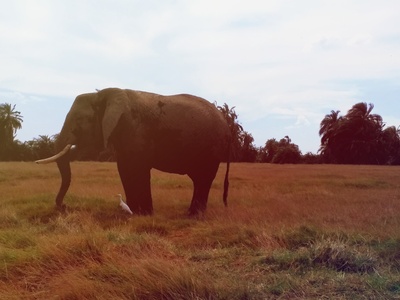
African elephant
Africa’s largest land mammal still found in Chad’s protected southern parks; elephants move between savanna, woodlands and floodplains. They are a flagship species for anti-poaching efforts and shape habitats with their feeding and migration patterns.
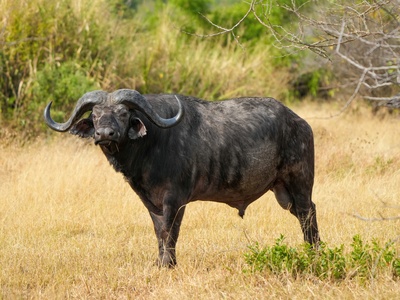
African buffalo
Large, social herbivore common in Chad’s south around rivers and floodplains. Buffaloes form dense herds, defend against predators like lions, and are important prey in Zakouma and other protected savanna ecosystems.
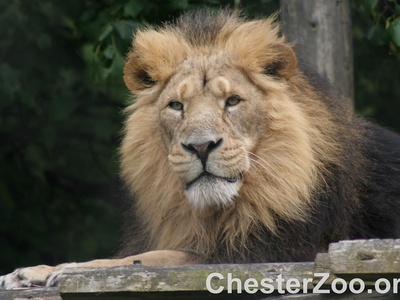
Lion
The iconic large predator of Chad’s southern parks; lions hunt large ungulates on open plains and near water. Populations are vulnerable and receive focused conservation attention in protected areas like Zakouma National Park.
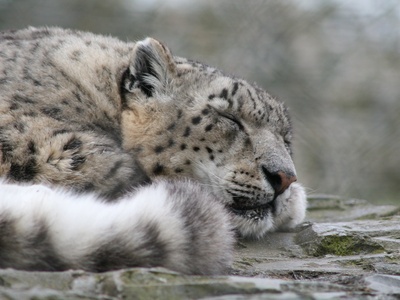
Leopard
Elusive and adaptable, leopards occur in woodland, escarpments and rocky habitats across Chad. They’re solitary night hunters, often under-recorded, and face habitat loss and conflict with humans.
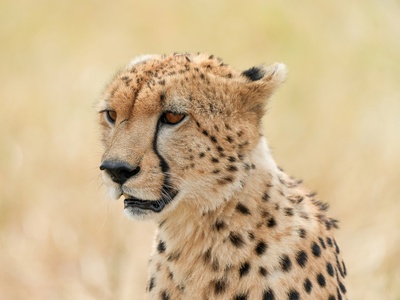
Cheetah
A high-speed hunter of open grasslands, cheetahs are rare in Chad but recorded in Sahelian and protected savanna zones. They prefer wide open areas and face threats from habitat fragmentation and persecution.
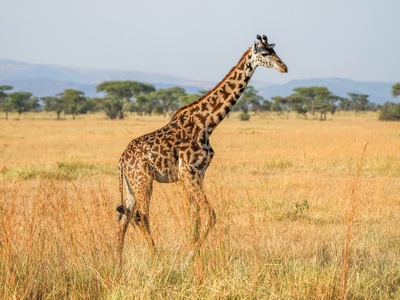
Giraffe
The long-necked browsing giraffe (Kordofan form historically present) is found in southern savannas. Giraffes feed on acacias and are vulnerable to poaching and habitat change but remain a memorable species for visitors to Zakouma.
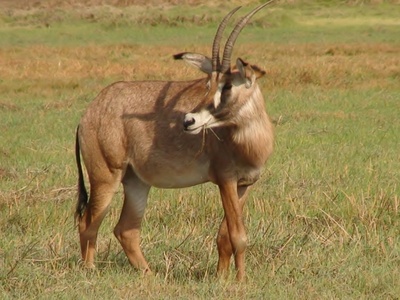
Roan antelope
Large antelope of open woodlands and savannas, roan antelopes are present in Chad’s protected southern areas. They form herds, prefer tall grasses and are an important grazer in park ecosystems.
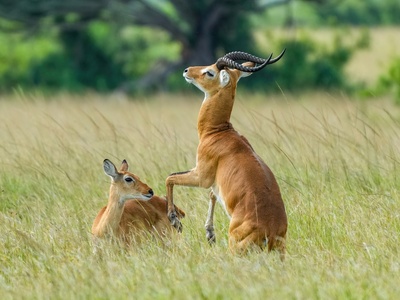
Kob
A water-loving antelope common on floodplains and next to rivers in southern Chad. Kobs form large aggregations during the wet season and are a favored prey species of lions and hyenas.
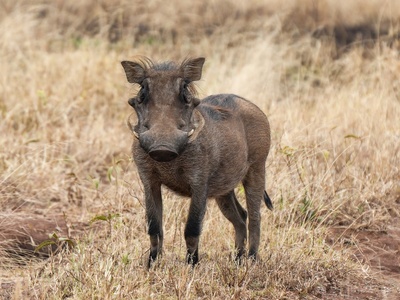
Warthog
Common and conspicuous, warthogs graze and root in open savannas and near water. Their burrowing and grazing habits influence grassland structure, and they appear often around protected areas and farmland margins.
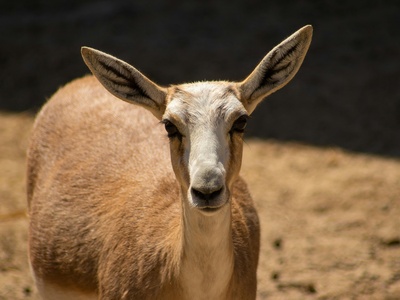
Dorcas gazelle
A small, desert-adapted gazelle occurring in Chad’s northern Sahel and Sahara fringe. Dorcas gazelles survive on sparse vegetation, withstand heat and are a classic species of arid landscapes.
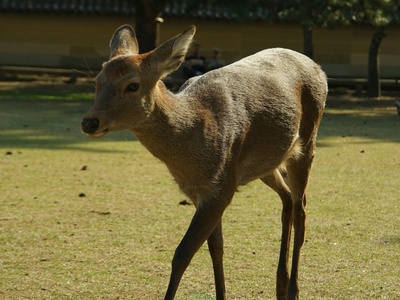
Dama gazelle
Critically endangered and rare, the dama gazelle survives in remote Saharan refuges in Chad. Notable for its elegant appearance and long migrations, it faces intense threats from hunting and habitat loss.
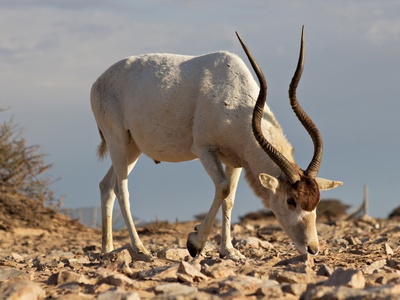
Addax
A highly desert-adapted antelope once native to Chad’s Sahara; the addax is critically endangered with very few wild records but historical and some recent sightings report occurrence in remote Saharan zones.
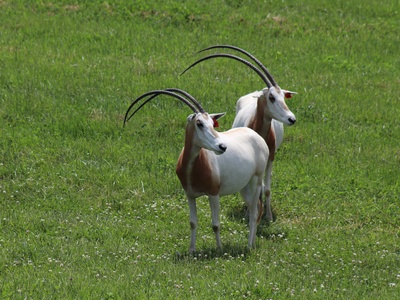
Scimitar-horned oryx
Once widespread across Chad’s Sahel, the scimitar-horned oryx became extinct in the wild but was historically native to Chad; reintroduction efforts elsewhere highlight its cultural and ecological importance.
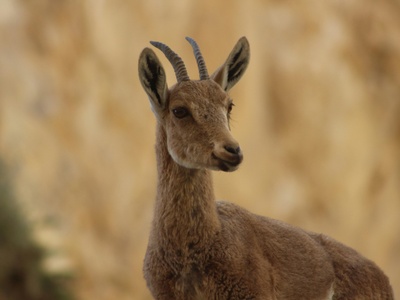
Nubian ibex
Sure-footed mountain ungulate occupying cliffs and rocky ridges in Chad’s Tibesti and Ennedi ranges. Nubian ibex are adapted to steep terrain and are a striking sight in remote northern mountains.
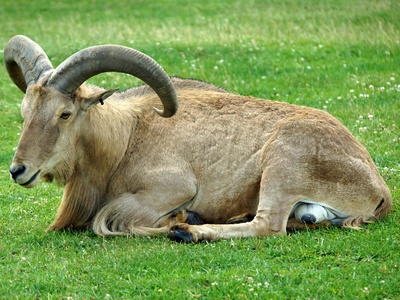
Barbary sheep
Also called aoudad, this caprid lives on rocky outcrops and escarpments in northern Chad. They graze sparse mountain vegetation and are adapted to arid, rugged terrain.
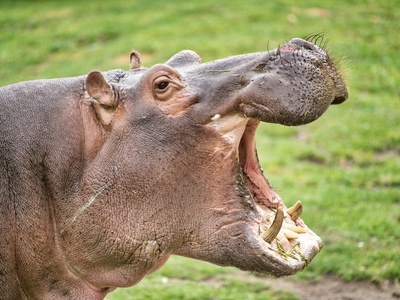
Hippopotamus
Hippos inhabit Chad’s larger rivers, oxbows and wetlands, particularly in the south. They are important ecosystem engineers but face threats from habitat change and hunting in river systems.
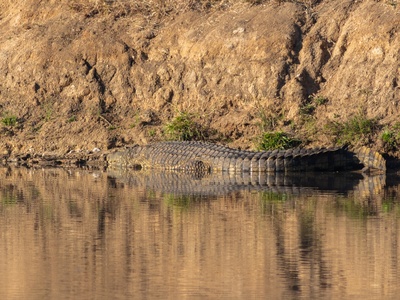
Nile crocodile
A large ambush predator of Chad’s rivers and lakes, Nile crocodiles occur in the Chari-Logone basin and Lake Chad wetlands. They play a top-predator role and are often encountered near water margins.
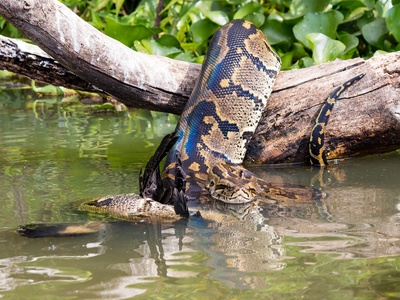
African rock python
The largest snake in sub-Saharan Africa, rock pythons inhabit dense vegetation near water in southern Chad. They are nonvenomous ambush predators that feed on birds, mammals and occasionally livestock.
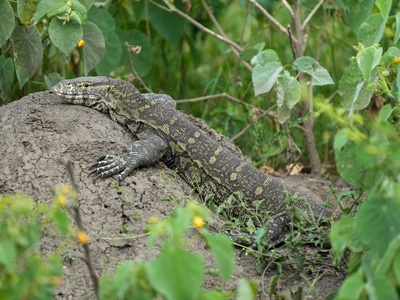
Nile monitor
Large semi-aquatic lizard common along Chad’s waterways. Nile monitors are opportunistic feeders and are often seen near rivers, floodplains and lakes, including Lake Chad.
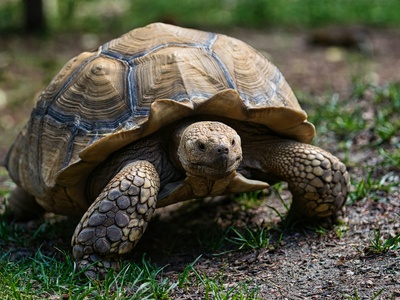
African spurred tortoise
Also called the sulcata tortoise, this species is native to Chad’s dry grasslands and Sahel. It burrows to escape heat and is a keystone herbivore shaping vegetation structure.
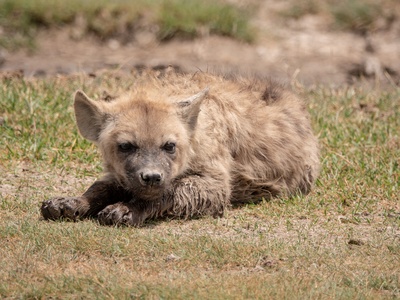
Spotted hyena
A socially complex carnivore occupying savannas and woodlands of southern Chad. Spotted hyenas scavenge and hunt in packs, are abundant in protected areas, and are key scavengers in the food web.
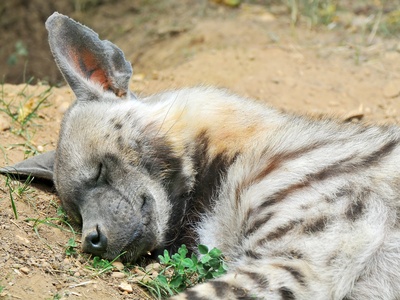
Striped hyena
A solitary, nocturnal scavenger occurring in Chad’s Sahel and rocky habitats. Striped hyenas are less common than spotted hyenas and often use cliffs and caves for denning.
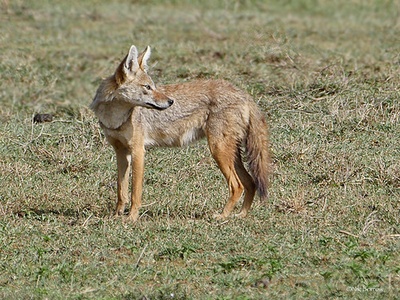
African golden wolf
A small canid of Sahelian and agricultural landscapes, the African golden wolf hunts rodents and small mammals. It adapts to human-modified areas but may conflict with pastoralists in some regions.
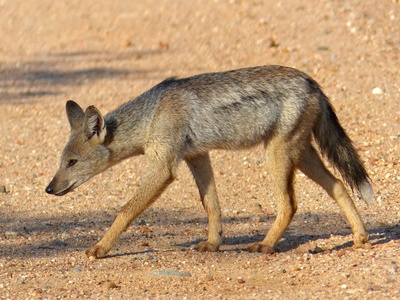
Side-striped jackal
A medium-sized jackal that prefers moister woodlands and riverine habitats in Chad’s south. It is an omnivorous, adaptable scavenger that avoids the driest Sahel compared to other canids.
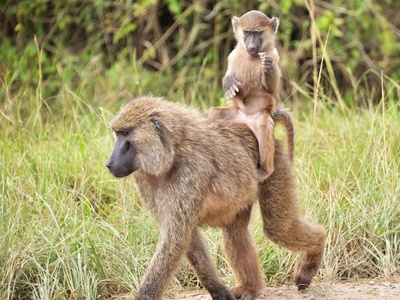
Olive baboon
Common primate in southern Chad, olive baboons live in troops near rivers and farmland. They are intelligent, social animals that sometimes raid crops, bringing human-wildlife interaction challenges.
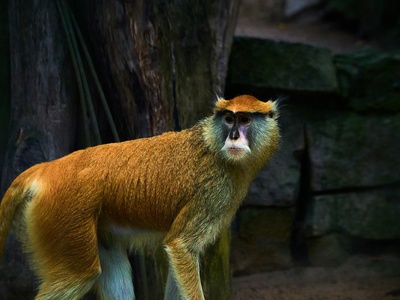
Patas monkey
Fast-moving, ground-dwelling monkey of the Sahel and dry savanna. Patas monkeys form social groups and are active in open habitats where they forage for insects and seeds.
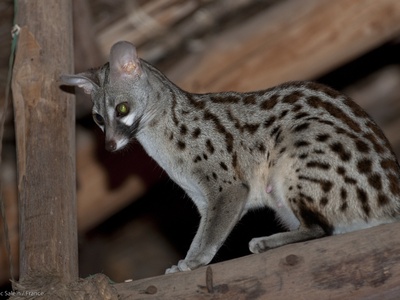
Common genet
Nocturnal and arboreal, common genets live in woodlands and near villages in southern Chad. They feed on small mammals, birds and fruit and often go unnoticed by casual observers.
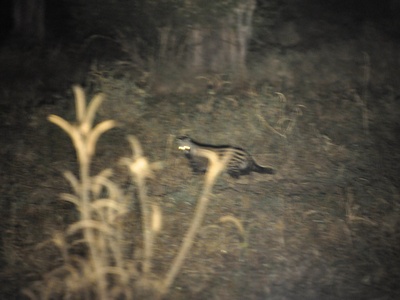
African civet
Nocturnal omnivore of southern Chad’s wetter woodlands and riverine zones. African civets are secretive, prized historically for civet musk, and help control small vertebrate and insect populations.
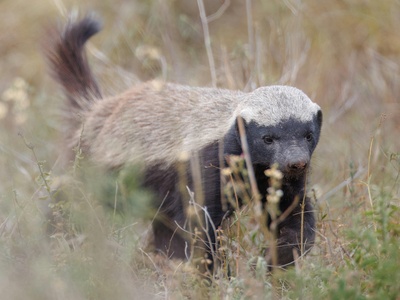
Honey badger
Bold and tenacious, honey badgers occur across Chad’s varied habitats. They feed on small mammals, reptiles and honey and are known for fearless interactions with larger predators.
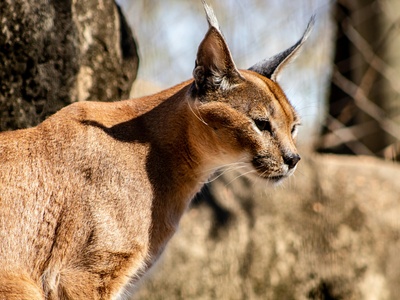
Caracal
A sleek, medium-sized wild cat of scrub and rocky areas in Chad. Caracals are agile hunters of birds and small mammals and are notable for their tufted ears and impressive leaps.
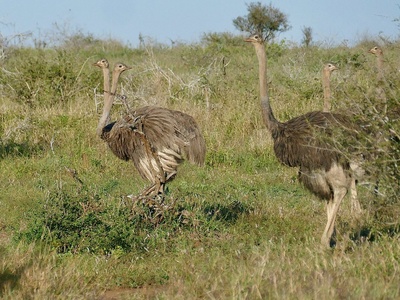
Common ostrich
The world’s largest bird present in Chad’s open Sahel and plains. Ostriches are flightless, fast-running herbivores that lay large eggs and are adapted to hot, arid grasslands.
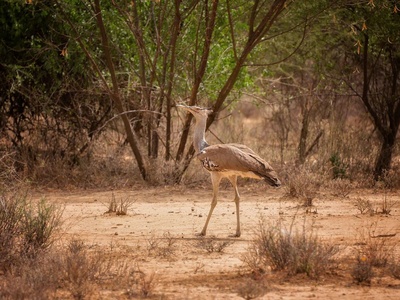
Kori bustard
One of the heaviest flying birds, the kori bustard inhabits open dry grasslands across Chad’s Sahel. They feed on insects, small vertebrates and seeds and are a striking grassland species.
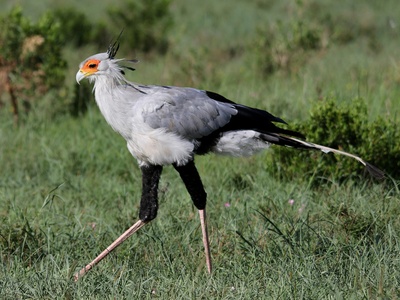
Secretarybird
Tall, long-legged raptor that hunts snakes and small mammals on foot. Secretarybirds inhabit Chad’s open savannas and are distinctive with their crest and terrestrial hunting style.
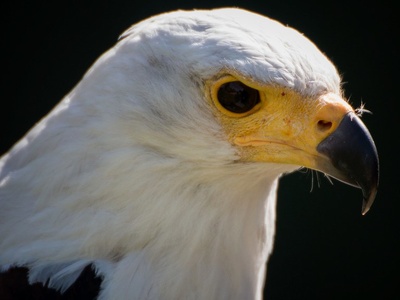
African fish eagle
A familiar waterside raptor around Lake Chad and major rivers. With a loud call and fish-based diet, African fish eagles perch on shoreline trees and are easy to spot at wetlands.
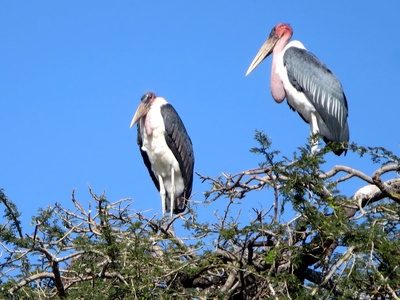
Marabou stork
Large scavenging stork frequenting Chad’s wetlands and human-modified sites. Marabou storks feed on carrion and waste and often gather in colonies near abundant food sources.
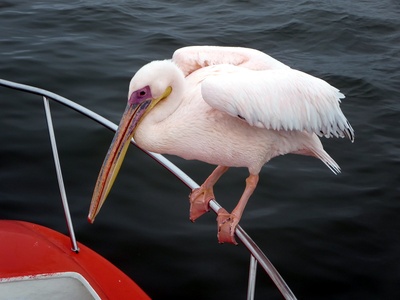
Great white pelican
A large, social pelican that feeds by cooperative fishing on Lake Chad and surrounding wetlands. Their seasonal movements track fish abundance and they form large, noisy breeding colonies where conditions allow.
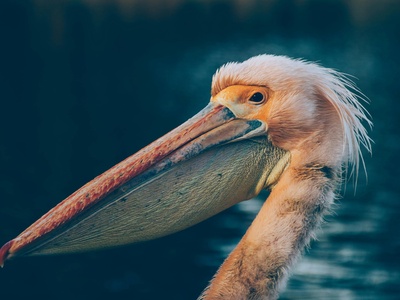
Pink-backed pelican
Smaller pelican species using shallow waters and floodplains in Chad. Pink-backed pelicans fish in groups and are common on seasonal wetlands and lake margins.
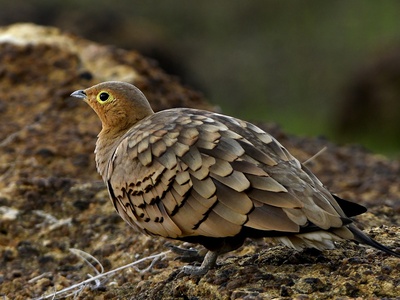
Chestnut-bellied sandgrouse
Specialist of dry Sahel plains, sandgrouse travel long distances to water and carry moisture-soaked belly feathers to their chicks. They are well adapted to arid Chad habitats.
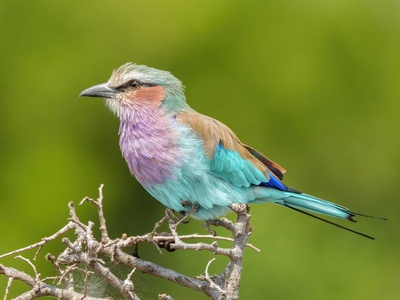
Lilac-breasted roller
Colorful, acrobatic bird of open woodlands and savannas in Chad. The lilac-breasted roller perches conspicuously to sally for insects and is a favorite of photographers and birdwatchers.
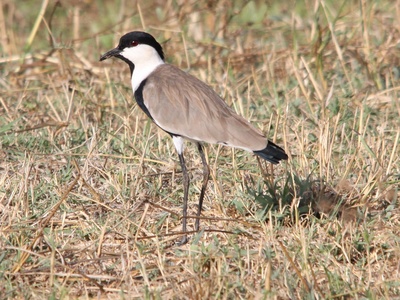
Spur-winged lapwing
A common wader around Chad’s wetlands and lakeshores, the spur-winged lapwing nests on open mudflats and defends nests vigorously against predators and intruders.
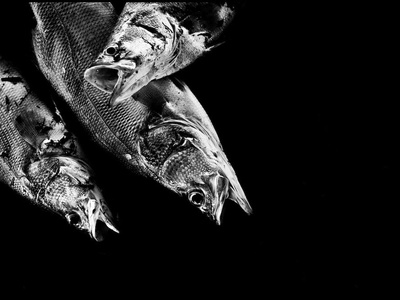
Nile perch
A large predator fish of major rivers and lakes, Nile perch occurs in parts of the Lake Chad basin and influences fish community structure through heavy predation.
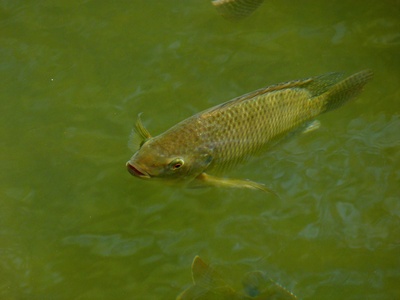
Nile tilapia
A widespread, hardy cichlid common in Chad’s lakes and rivers. Nile tilapia is important for local fisheries and adapts to varying water conditions in the Lake Chad system.
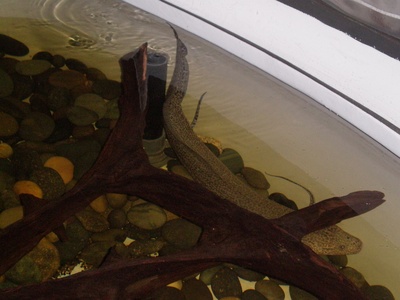
West African lungfish
An air-breathing fish that survives seasonal drying by aestivating in mud. The lungfish is found in Chad’s seasonal floodplains and supports traditional fisheries during wet seasons.
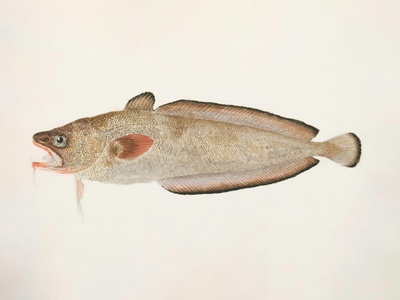
African catfish
A versatile, resilient catfish common across Chad’s inland waters. It tolerates low oxygen and is important to local fisheries, moving between deeper channels and seasonal pools.
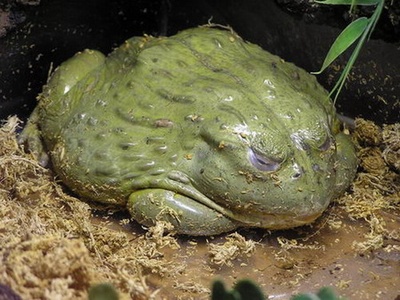
African bullfrog
A large, burrowing frog that emerges during rains to breed in temporary pools. African bullfrogs are well adapted to Chad’s seasonal rainfall and are a striking part of the amphibian fauna.
